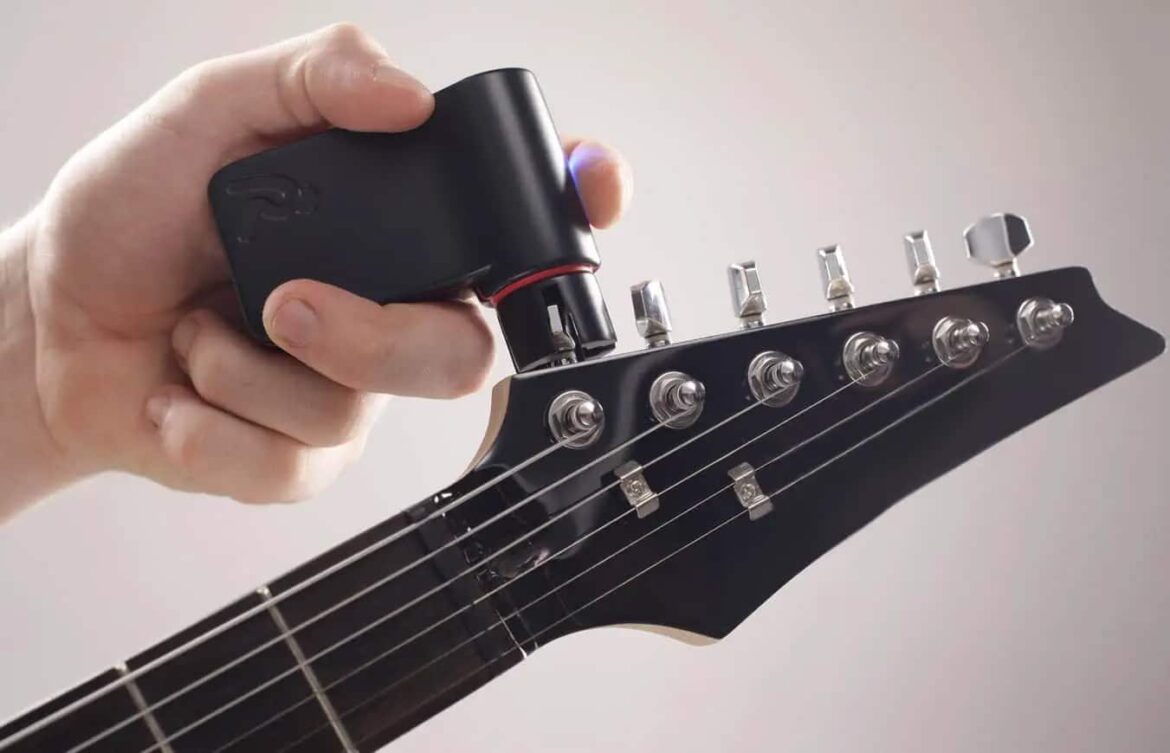837
If you don’t want your electric guitar to sound weird and inharmonious, you need to tune it regularly. We show you how to do this in this music tip
Tuning an electric guitar – the tones of the individual strings
An electric guitar, like an acoustic guitar, usually has six strings.
- The lowest string, i.e. the first from the top, is an E. This is followed by an A, a D, a G, a B and finally another E.
- The best way to memorize the order of the strings is to use a mnemonic: “A beginner guitarist has zeal”. The first letters of the individual words correspond to the notes of the strings:
- Tuning the electric guitar with a tuner is also the easiest and therefore most suitable for beginners. This is connected to the electric guitar via the amplifier connection using a guitar cable.
- When you strike the individual strings, the device shows you whether the tone of the string is too low or too high. By turning the mechanism of the corresponding string, you can raise the tone of the string or tune it lower.
- If you have a good ear and some experience, you can tune your electric guitar without a tuner.
Tuning an electric guitar without a tuner
To be able to tune a guitar correctly without a tuner, you need a basic tone.
- The so-called concert pitch is used as standard. This is the indented A. This tone has a frequency of 440 Hertz.
- With a tuning fork you can get this tone and tune the A-string of your electric guitar.
- If this string is in tune, you can tune all the other strings. To tune the E string above it, hold it down at the fifth fret. Strike the E-string so that the note corresponds to the A-string struck when empty
- You will find the correct note for the D-string if you then hold down the A-string at the fifth fret. If the D-string is in tune, hold down the fifth fret. After this note, you can tune the G string
- To get the right note for the following B-string, you have to press the G-string at the fourth fret, not at the fifth fret like the other strings before.
- Once the B-string is tuned correctly, only the lightest note is missing, namely the lower, thin E-string. You can get the tone for tuning this string by holding the B-string down at the fifth fret.
- Tuning without a tuner is even easier if you download a guitar tuning app to your smartphone. This allows you to play the individual notes on your cell phone and then tune the strings.
- Tip: If you are a beginner, tuning the electric guitar can take a little time. Only turn the individual tuners very carefully to tighten or loosen the strings a little.
- With time you will get more practice. Then tuning your electric guitar will be quicker too.
E-Guitar tuning – tips for advanced guitarists
If you already have some experience tuning your electric guitar, there are a few more tips and tricks that can help you tune your guitar perfectly. Here are some of them:
- Use a tuning app: Even if you can already tune your guitar without a tuner or tuning fork, a tuning app on your smartphone or tablet can be very useful. There are many free and paid apps that can help you tune your guitar quickly and accurately.
- Tune your guitar regularly: The more often you tune your guitar, the better you will get at it. If you only tune your guitar infrequently, it can be more difficult to tune the strings perfectly. Try to tune your guitar before every practice or performance to make sure it always sounds perfect.
- Tune your guitar in different environments: If you only tune your guitar in one room, it may sound different in other rooms or on stage. Try tuning your guitar in different environments to make sure it always sounds perfect no matter where you play.
- Use high quality strings: If you use high-quality strings, you can ensure that your guitar will always sound perfect. Cheap strings can quickly go out of tune or sound uneven, making tuning more difficult. Invest in high-quality strings to ensure that your guitar always sounds perfect
- Tune your guitar while playing: If you find that your guitar is out of tune while playing, you can tune it quickly and easily by adjusting the appropriate string while playing. This takes some practice, but can be very useful if you need to tune your guitar quickly and easily.
- Use a tuner pedal: If you perform regularly or play in a band, a tuner pedal can be very useful. These pedals can be connected to your pedalboard and help you to tune your guitar quickly and accurately without the need for a separate tuner.

